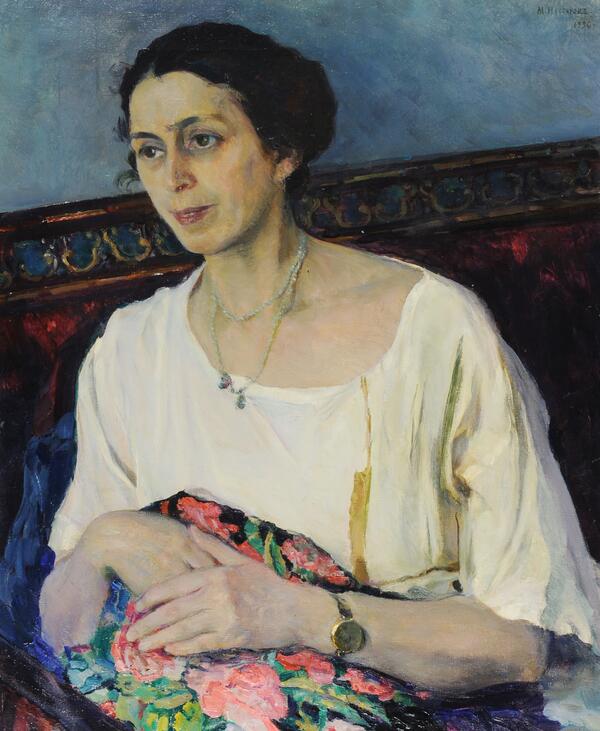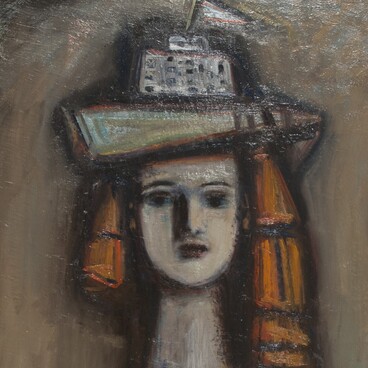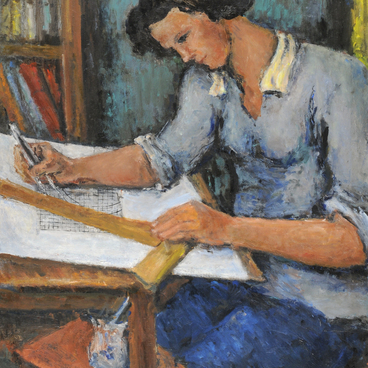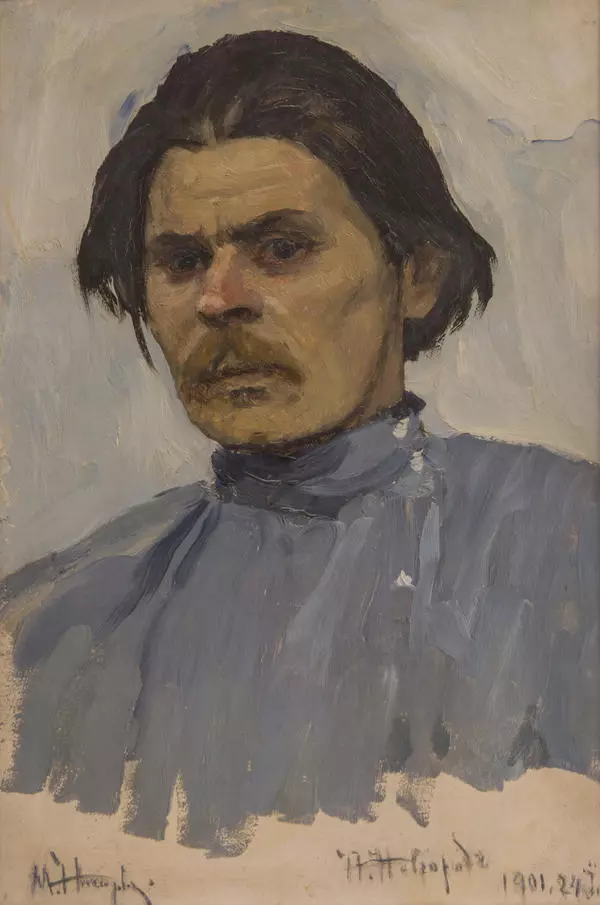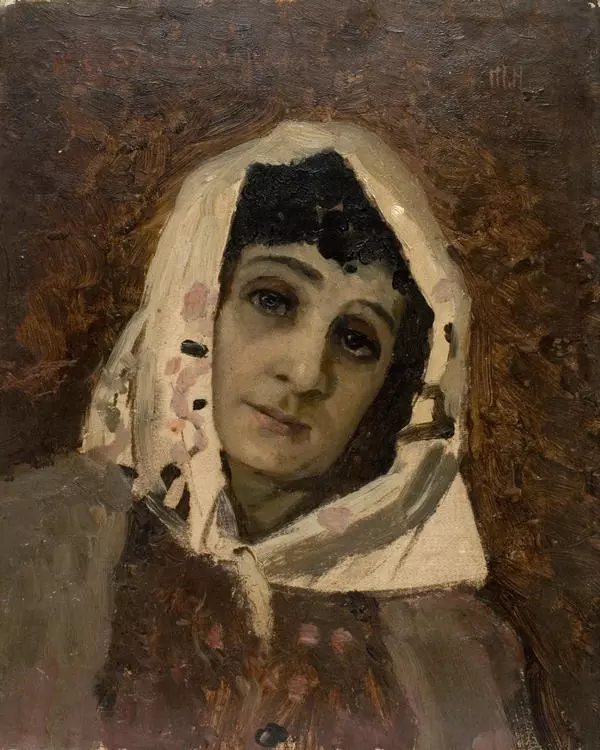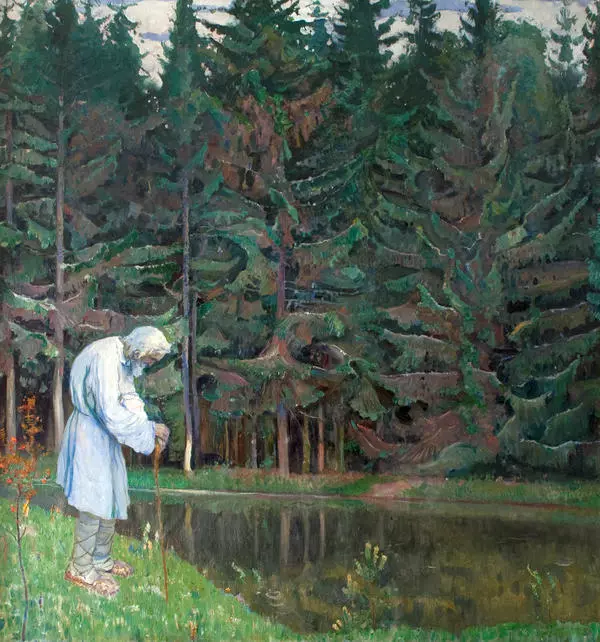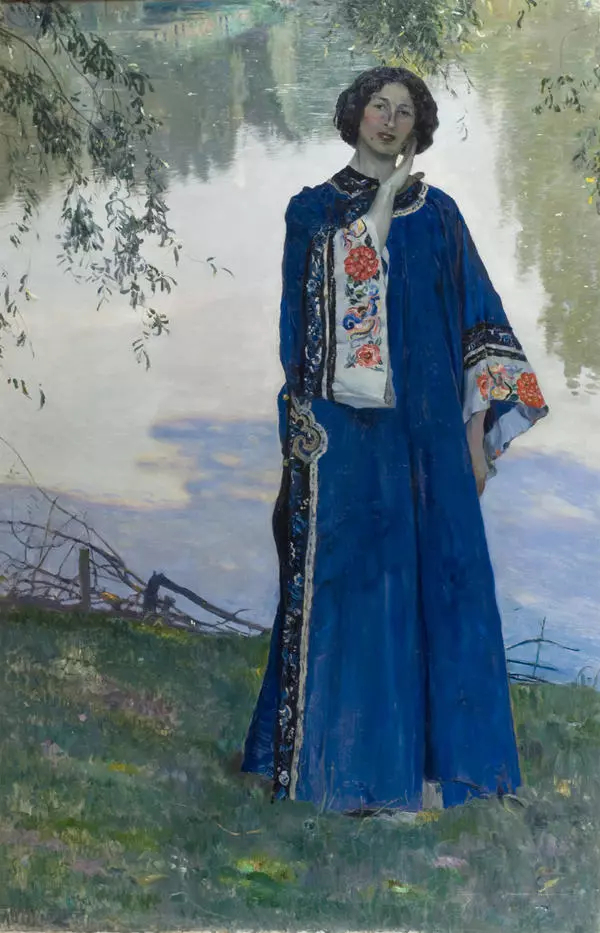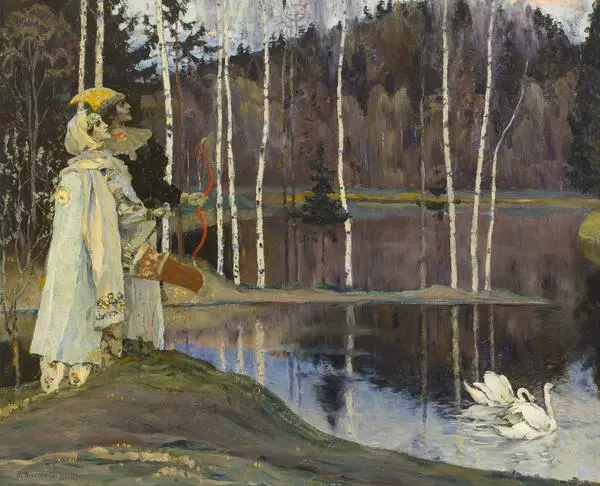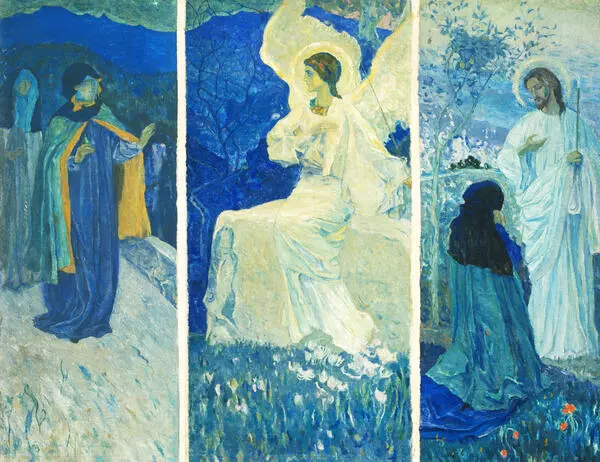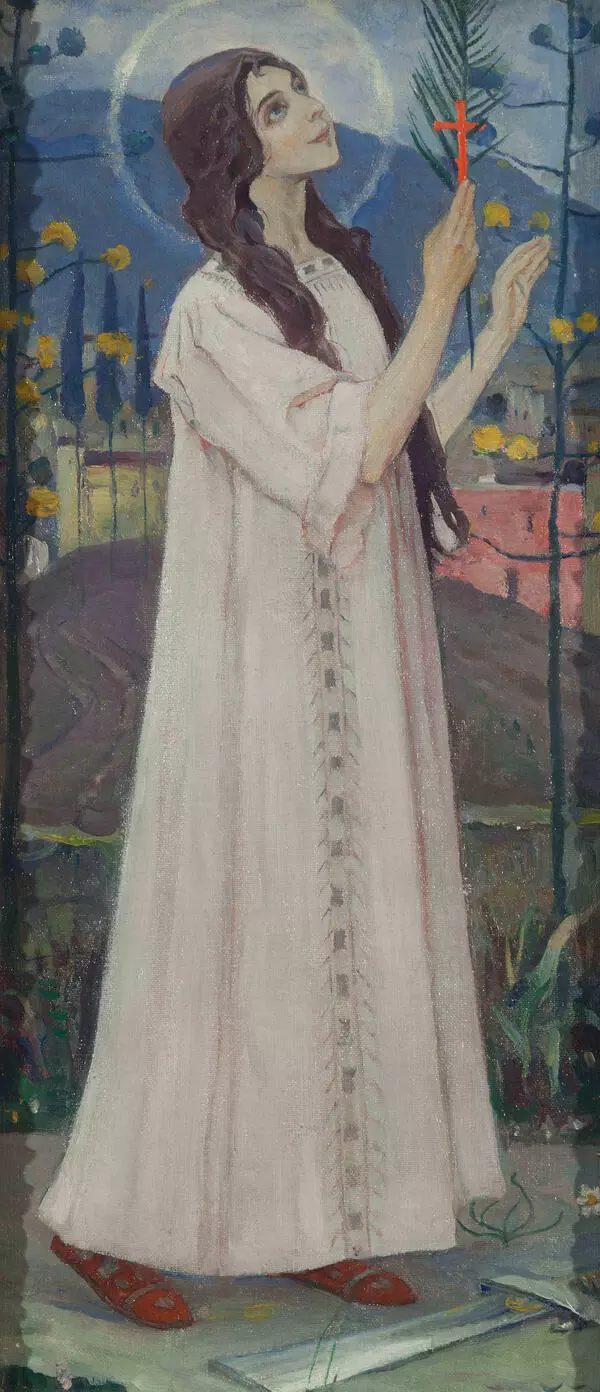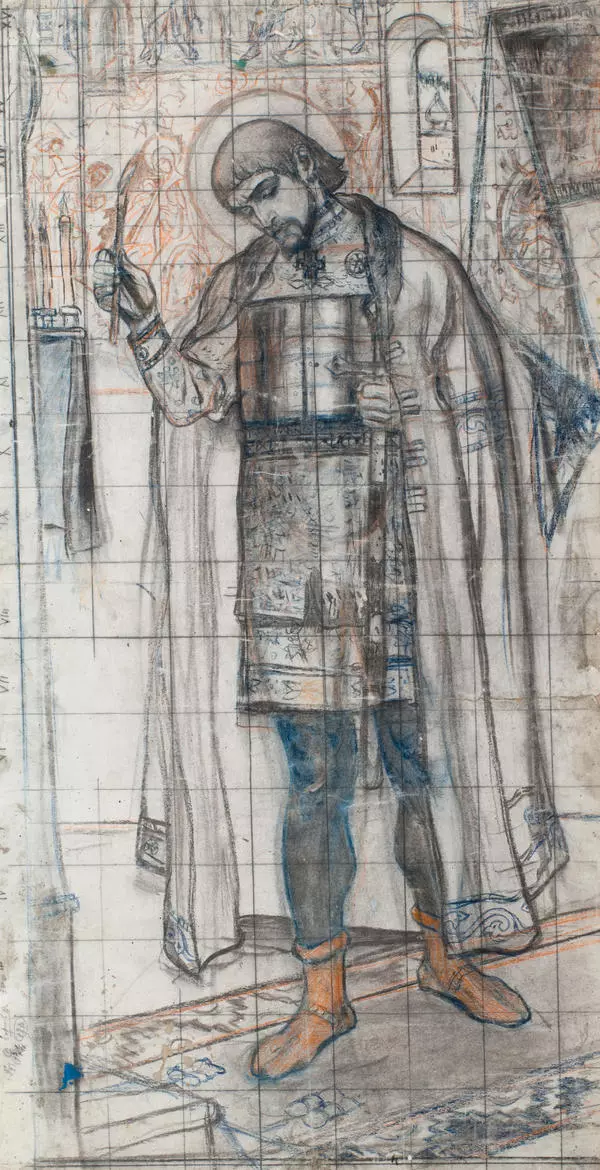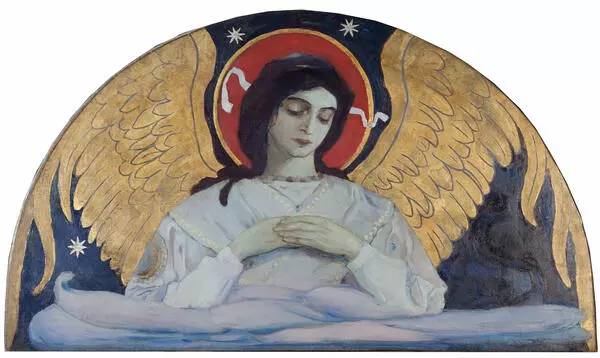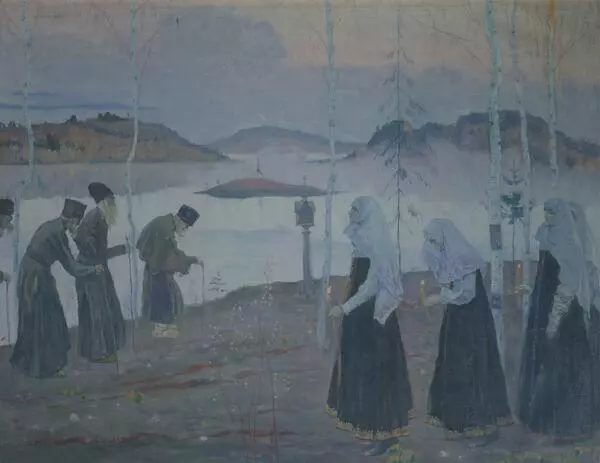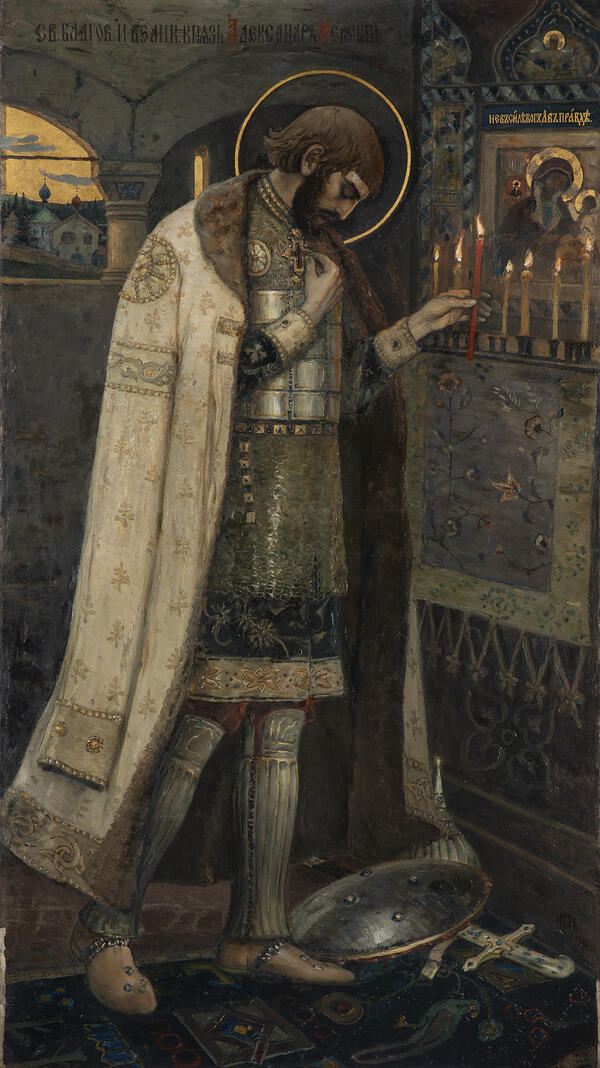Mikhail Nesterov became famous at the beginning of the 20th century as an artist that did compositions that were religious and philosophical. In the 1920s, artist reverts to a theme that began to show itself before the 1917 Revolution: depicting the innermost stirrings of the human soul, the subtle, barely perceptible state of a person, detached from everyday worries, in moments of deep thoughtfulness or lucid sadness. For ‘lyrical portraits’, the artist still chooses female models, trying to find eternal moral foundations in the female soul: kindness, the ability to have compassion, and a particular spirituality.
Mikhail Nesterov and Elena Razumova shared a strong, profound friendship. This portrait, painted in 1936 and now in the collections of the Radischev Museum, attests to this friendship and deep respect. Elena Razumova was born in Saratov, and graduated with a medical degree in Moscow. People valued her, both as a terrific specialist and an art aficionado, and just as a kind-hearted person that people could always come to for advice or help. The portrait was created at a time when Elena Pavlovna was experiencing severe family woes: her husband had been arrested.
Mikhail Nesterov and Elena Razumova shared a strong, profound friendship. This portrait, painted in 1936 and now in the collections of the Radischev Museum, attests to this friendship and deep respect. Elena Razumova was born in Saratov, and graduated with a medical degree in Moscow. People valued her, both as a terrific specialist and an art aficionado, and just as a kind-hearted person that people could always come to for advice or help. The portrait was created at a time when Elena Pavlovna was experiencing severe family woes: her husband had been arrested.

